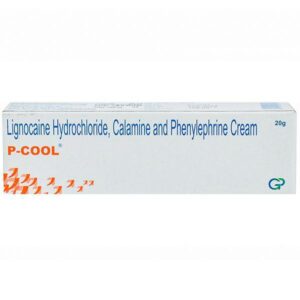LIGNOCAINE + PHENYLEPHRINE + CALAMINE
Lignocaine: Lignocaine, also known as lidocaine, is a local anesthetic drug that is commonly used to temporarily numb an area of the body. It is available in various forms such as creams, gels, injections, and sprays.
Its primary use is to relieve pain or discomfort during medical procedures, surgeries, and dental work. Lignocaine works by blocking the transmission of nerve signals in a specific area, thus causing temporary numbness and reducing pain perception.
The dose of lignocaine can vary depending on the form of administration and the specific medical procedure being performed. For topical use, the recommended dose is usually 2-4 grams of cream or gel applied to the affected area. For dental procedures, injectable lignocaine is commonly used with doses ranging from 1-5 milliliters.
While lignocaine is generally considered safe, it can have some side effects. Common side effects include temporary numbness or tingling at the site of application, mild skin irritation, itching, or redness. In rare cases, allergic reactions can occur, which may manifest as hives, difficulty breathing, or swelling of the face, lips, tongue, or throat. If any severe or persistent side effects occur, it is important to seek medical attention.
Lignocaine should be used with caution in individuals with certain medical conditions, such as liver problems, heart diseases, epilepsy, or a history of allergic reactions to local anesthetics. It can also interact with certain medications, so it is crucial to inform your healthcare provider about any other drugs you are taking before using lignocaine.
Overall, lignocaine is a widely used local anesthetic that effectively numbs an area and provides temporary pain relief. However, it is essential to use it as directed by a healthcare professional and be aware of the possible side effects.
Phenylephrine: Phenylephrine is a medication that is commonly used as a nasal decongestant, as well as a pupil restrictor during ophthalmic procedures, and as a vasoconstrictor to increase blood pressure in certain medical conditions.
The main mechanism of action of Phenylephrine is that it acts as an alpha-adrenergic agonist, which means it stimulates alpha-adrenergic receptors in the body. By doing so, it causes vasoconstriction, which leads to the narrowing of blood vessels, decreasing swelling and congestion in the nasal passages, and raising blood pressure by constricting blood vessels in certain areas.
The recommended dose of Phenylephrine depends on the form of the medication being used. For nasal congestion, it is often available in the form of nasal sprays or drops, and the typical dose is 2-3 sprays or drops in each nostril every 4 hours as needed. It is important to follow the instructions on the packaging or as directed by a healthcare professional.
As for side effects, Phenylephrine can cause a range of common and less common adverse effects. Common side effects include nasal dryness or irritation, sneezing, headache, dizziness, and increased blood pressure. Less common side effects include a rapid or irregular heartbeat, difficulty sleeping, nervousness or anxiety, and nausea. In rare cases, severe allergic reactions may occur, which require immediate medical attention.
It is important to note that Phenylephrine should not be used by individuals with certain medical conditions, such as severe hypertension, heart disease, diabetes, or thyroid problems. It is also not recommended for use in children under the age of 6.
As with any medication, it is advisable to consult with a healthcare professional before starting Phenylephrine to determine the appropriate dose, considering individual medical history and potential interactions with other medications.
Calamine: Calamine is a medication that is commonly used to relieve itching and skin irritation caused by various conditions such as insect bites, poison ivy/oak/sumac, sunburn, and chickenpox. It is available in the form of a lotion or cream and is typically applied topically to the affected area of the skin.
The mechanism of action of calamine is not fully understood. However, it is believed to work by providing a cooling and soothing effect on the skin, which helps alleviate itching and irritation. Calamine also contains zinc oxide, which has mild antiseptic properties that can help prevent infection in the affected areas.
The recommended dose of calamine varies depending on the age of the patient and the severity of the condition being treated. It is important to follow the instructions provided by the healthcare professional or the product label. Generally, calamine is applied to the affected area 2-3 times daily or as directed.
Calamine is generally well-tolerated and side effects are rare. However, some individuals may experience mild skin dryness, irritation, or allergic reactions such as itching or rash. If these side effects persist or worsen, it is important to seek medical attention.
It is worth noting that calamine should not be applied to broken or irritated skin, as it may cause further irritation. Additionally, it is not meant for internal use and should be kept away from the eyes, nose, mouth, and other mucous membranes. If accidental ingestion or contact with these areas occurs, medical assistance should be sought immediately.
While calamine is considered a safe and effective option for relieving itching and skin irritation, it is always recommended to consult with a healthcare professional before using any medication, especially if you have any underlying health conditions or are taking other medications.

